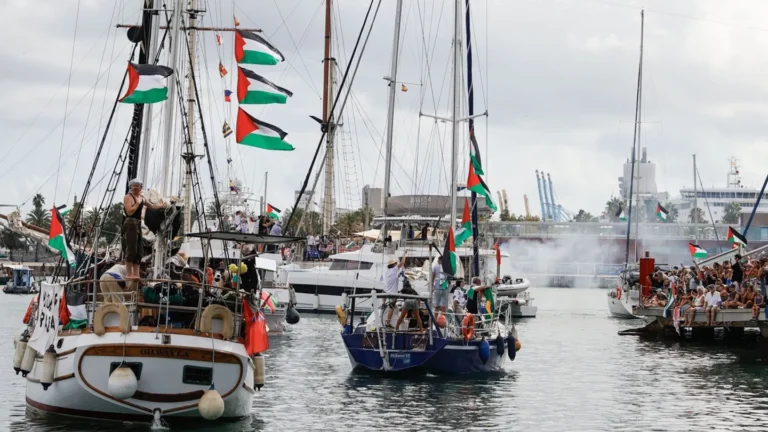Cairo, Egypt – The Israeli Navy announced that it had thwarted a new attack attempt by the so-called “Resilience Flotilla” off the coast of Gaza. The Navy confirmed that its personnel had used what it described as “innovative and unconventional” methods.
According to the Israeli military spokesman, the attackers used camouflage and deception techniques uncommon in previous naval encounters. However, they were detected and intercepted at sea.
Naval maneuver turns into a clash
The latest attack was more than just a passing infiltration. Rather, it appeared more like a naval maneuver aimed at testing Israel’s defensive capabilities. Hebrew sources indicated that the operation took place on multiple fronts and involved several small boats. This made it more complex than previous attempts.
“The Steadfastness Fleet”… from a symbolic idea to a practical threat
The name “Resilience Flotilla” has emerged in recent months as a code name for limited Palestinian naval operations. However, the new development reflects its transformation from a mere propaganda tool to a real pressure card on Israel, which has begun to treat it as a security threat requiring close monitoring.
The sea is a new confrontation arena
Analysts believe that the sea has become an additional front alongside the land and air confrontation. While Israel has become accustomed to managing conflict from the air and land, any maritime incursion—even a limited one—carries powerful political and media messages. It also opens the door to an unprecedented escalation.
Messages beyond Gaza’s borders
Although the attack failed to achieve its objectives on the ground, its implications extend beyond Gaza. The appearance of the “Resilience Flotilla” at a sensitive time sends a message that the means of pressure on Israel are no longer limited to missiles or tunnels. Rather, they have extended to the waters of the Mediterranean.

